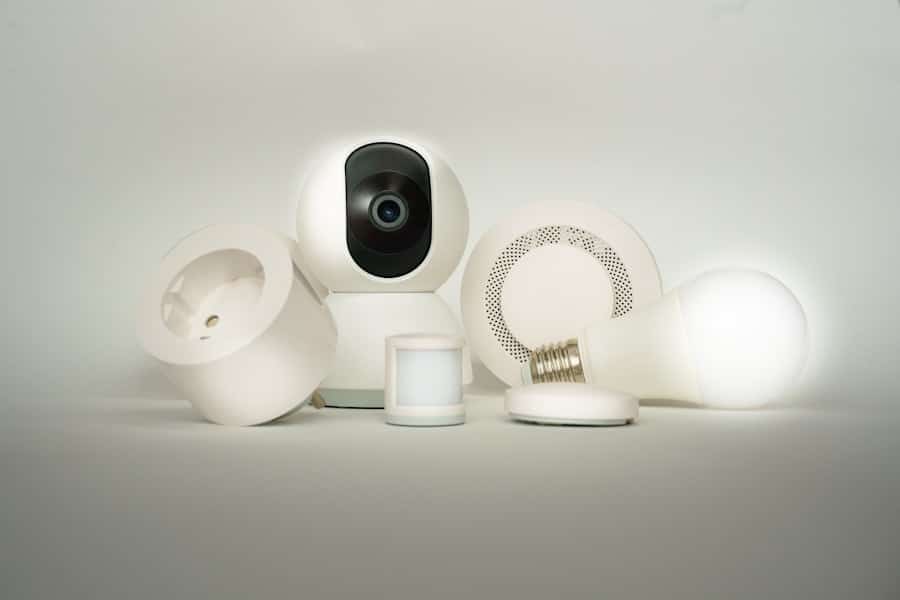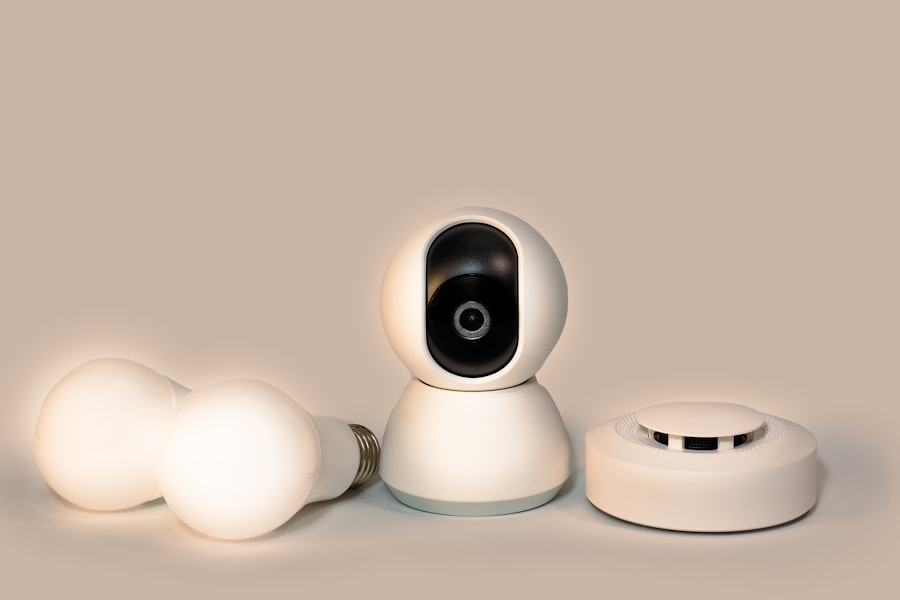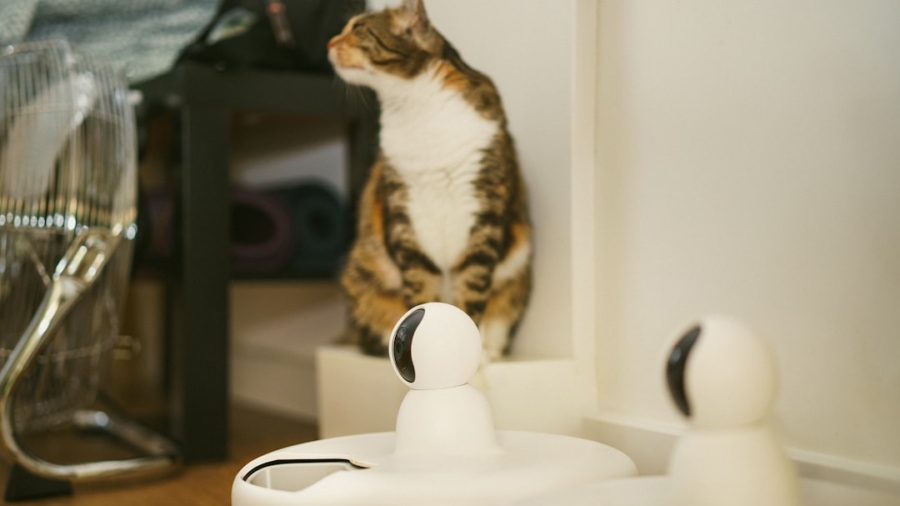The Internet of Things (IoT) has revolutionized the way we interact with technology, and its impact is particularly significant for the senior population. IoT devices encompass a wide range of interconnected gadgets that communicate with each other and can be controlled remotely, offering a plethora of benefits tailored to the needs of older adults. As the global population ages, the demand for innovative solutions that enhance the quality of life for seniors has surged.
These devices not only promote independence but also provide peace of mind for both seniors and their caregivers. The integration of IoT technology into daily life can empower seniors to maintain their autonomy while ensuring their safety and well-being. From smart home systems that adjust lighting and temperature to wearable health monitors that track vital signs, IoT devices are designed to cater to the unique challenges faced by older adults.
By leveraging these technologies, seniors can enjoy a more connected lifestyle, enabling them to engage with their surroundings and loved ones in ways that were previously unimaginable. The potential for IoT devices to transform the aging experience is vast, making it essential to explore their various applications in detail.
Key Takeaways
- IoT devices for seniors offer monitoring and safety features to provide peace of mind for both seniors and their caregivers.
- Health and wellness tracking capabilities help seniors and their caregivers to stay on top of important health metrics and trends.
- Medication management features help seniors to stay organized with their medications and provide reminders for taking them.
- Communication and social connection tools enable seniors to stay connected with loved ones and caregivers, reducing feelings of isolation.
- Home automation and convenience features make daily tasks easier for seniors, promoting independence and comfort in their own homes.
- IoT devices for seniors also offer emergency response and assistance features, providing quick access to help in case of an emergency.
- When implementing IoT devices for seniors, it’s important to consider factors such as ease of use, privacy, and ongoing support for the seniors and their caregivers.
Monitoring and Safety Features
One of the most compelling aspects of IoT devices for seniors is their ability to enhance monitoring and safety. Smart home security systems equipped with cameras, motion sensors, and alarms can provide a robust layer of protection for older adults living alone. For instance, devices like Ring doorbells allow seniors to see who is at their door without having to physically approach it, reducing the risk of falls or accidents.
Additionally, smart locks can be programmed to allow caregivers or family members access without compromising the senior’s security. Beyond home security, IoT devices can monitor daily activities and detect unusual patterns that may indicate a problem. For example, smart sensors placed in various rooms can track movement and alert caregivers if a senior has not moved for an extended period.
Furthermore, some devices can send alerts directly to family members or healthcare providers, ensuring that help is on the way when needed. The integration of these monitoring systems not only enhances safety but also fosters a sense of security for seniors and their families.
Health and Wellness Tracking

Health and wellness tracking is another critical area where IoT devices have made significant strides. Wearable technology, such as smartwatches and fitness trackers, can monitor vital signs like heart rate, blood pressure, and oxygen levels in real-time. These devices often come equipped with features that allow users to set health goals, track physical activity, and even receive reminders for exercise or hydration.
For seniors, maintaining an active lifestyle is essential for overall health, and these wearables can motivate them to stay engaged. Moreover, many health tracking devices are designed to sync with mobile applications that provide comprehensive insights into an individual’s health trends over time. This data can be invaluable for healthcare providers who need to monitor chronic conditions or adjust treatment plans based on real-time information.
For instance, a senior with diabetes can use a connected glucose monitor that automatically logs readings and shares them with their doctor, facilitating timely interventions when necessary. The ability to track health metrics seamlessly empowers seniors to take charge of their well-being while fostering collaboration between patients and healthcare professionals.
Medication Management
Medication management is a crucial aspect of healthcare for seniors, as many older adults take multiple prescriptions daily. IoT devices designed specifically for this purpose can significantly reduce the risk of medication errors and improve adherence to prescribed regimens. Smart pill dispensers are one such innovation; these devices can be programmed to dispense the correct dosage at scheduled times, accompanied by alerts or reminders sent directly to the user’s smartphone or caregiver.
If a senior forgets to take their medication, the device can send notifications to family members or caregivers, prompting them to check in. This level of oversight not only ensures that medications are taken as prescribed but also alleviates anxiety for both seniors and their loved ones.
Furthermore, some IoT solutions integrate with telehealth platforms, allowing healthcare providers to monitor medication adherence remotely and make necessary adjustments based on real-time data.
Communication and Social Connection
Social isolation is a significant concern for many seniors, particularly those who may have mobility issues or live far from family and friends. IoT devices can bridge this gap by facilitating communication and fostering social connections. Smart speakers like Amazon Echo or Google Nest Hub enable voice-activated calls and video chats, making it easier for seniors to connect with loved ones without needing advanced technical skills.
These devices often come with user-friendly interfaces that simplify the process of reaching out. In addition to direct communication, IoT devices can also support social engagement through various applications designed for entertainment and interaction. For example, seniors can access games, music streaming services, or even virtual reality experiences that allow them to explore new environments from the comfort of their homes.
Some platforms also offer community forums where seniors can connect with peers who share similar interests or experiences. By enhancing communication capabilities and providing avenues for social interaction, IoT devices play a vital role in combating loneliness among older adults.
Home Automation and Convenience

Home automation is another area where IoT devices shine, offering convenience that significantly enhances the daily lives of seniors. Smart home systems allow users to control various aspects of their living environment through voice commands or mobile apps. For instance, seniors can adjust lighting levels or thermostat settings without having to get up from their seats, which is particularly beneficial for those with limited mobility.
Automated lighting systems can also be programmed to turn on or off at specific times, reducing the risk of falls during nighttime trips to the bathroom. Moreover, smart appliances such as refrigerators, ovens, and washing machines can be integrated into a home automation system, allowing seniors to manage household tasks more efficiently. For example, a smart oven can be preheated remotely or programmed to cook meals at specific times, making meal preparation easier for those who may struggle with traditional cooking methods.
Additionally, voice-activated assistants can provide reminders for daily tasks or appointments, helping seniors stay organized without feeling overwhelmed by their responsibilities.
Emergency Response and Assistance
In emergencies, quick access to help can be life-saving for seniors living independently. IoT devices equipped with emergency response features provide an essential safety net for older adults who may face sudden health issues or accidents. Personal emergency response systems (PERS) are wearable devices that allow users to summon help at the push of a button.
Many modern PERS devices are equipped with GPS tracking capabilities, enabling responders to locate individuals quickly in case of an emergency. Additionally, some smart home systems include fall detection technology that automatically alerts caregivers or emergency services if a fall is detected within the home. This proactive approach ensures that help arrives promptly when it is most needed.
Furthermore, many IoT devices offer two-way communication features that allow seniors to speak directly with emergency responders or family members during a crisis. The combination of immediate assistance and effective communication significantly enhances the safety and security of seniors living alone.
Considerations for Implementing IoT Devices for Seniors
While the benefits of IoT devices for seniors are substantial, several considerations must be taken into account when implementing these technologies. One primary concern is the digital literacy of older adults; many may feel intimidated by new technology or lack the skills necessary to operate these devices effectively. To address this issue, it is crucial to provide comprehensive training and support tailored specifically for seniors.
Family members and caregivers can play an essential role in helping older adults become comfortable with new technologies. Another consideration is privacy and security; as IoT devices collect vast amounts of personal data, ensuring that this information is protected from unauthorized access is paramount. Seniors should be educated about potential risks associated with connected devices and how to safeguard their information through strong passwords and secure networks.
Additionally, selecting reputable brands known for prioritizing user privacy can help mitigate concerns about data security. Finally, it is essential to consider the individual needs and preferences of each senior when selecting IoT devices. Not all technologies will suit every individual; therefore, personalized assessments should guide decisions about which devices will be most beneficial in enhancing their quality of life.
By taking these factors into account, families and caregivers can ensure that the implementation of IoT devices leads to meaningful improvements in the lives of older adults while addressing any potential challenges they may face along the way.
The integration of IoT devices into the daily lives of seniors is revolutionizing how they maintain independence at home. These smart devices offer a range of functionalities, from health monitoring to home automation, ensuring that seniors can live safely and comfortably. For those interested in exploring more about the technological advancements that support independent living, the article on Trusted Reviews Provides Expert Reviews of the Latest offers insights into the latest IoT devices and their applications. This resource provides expert reviews that can help in selecting the most suitable devices for seniors, ensuring they benefit from the best technology available.
FAQs
What are IoT devices?
IoT devices, or Internet of Things devices, are physical devices embedded with sensors, software, and other technologies that enable them to connect and exchange data with other devices and systems over the internet.
How do IoT devices help seniors live independently at home?
IoT devices can help seniors live independently at home by providing various monitoring and assistance functions, such as remote health monitoring, fall detection, medication reminders, smart home automation, and emergency response systems.
What are some examples of IoT devices for seniors?
Examples of IoT devices for seniors include smart home security systems, wearable health monitors, medication dispensers, smart thermostats, motion sensors, and emergency call buttons.
How do IoT devices improve the safety of seniors at home?
IoT devices improve the safety of seniors at home by providing real-time monitoring and alerts for potential hazards, such as falls, changes in health conditions, or security breaches. They can also enable quick response in case of emergencies.
Are there privacy and security concerns with using IoT devices for seniors?
Yes, there are privacy and security concerns with using IoT devices for seniors, as these devices collect and transmit personal data. It is important to choose devices with strong security measures and to regularly update and monitor them to protect against potential risks.

